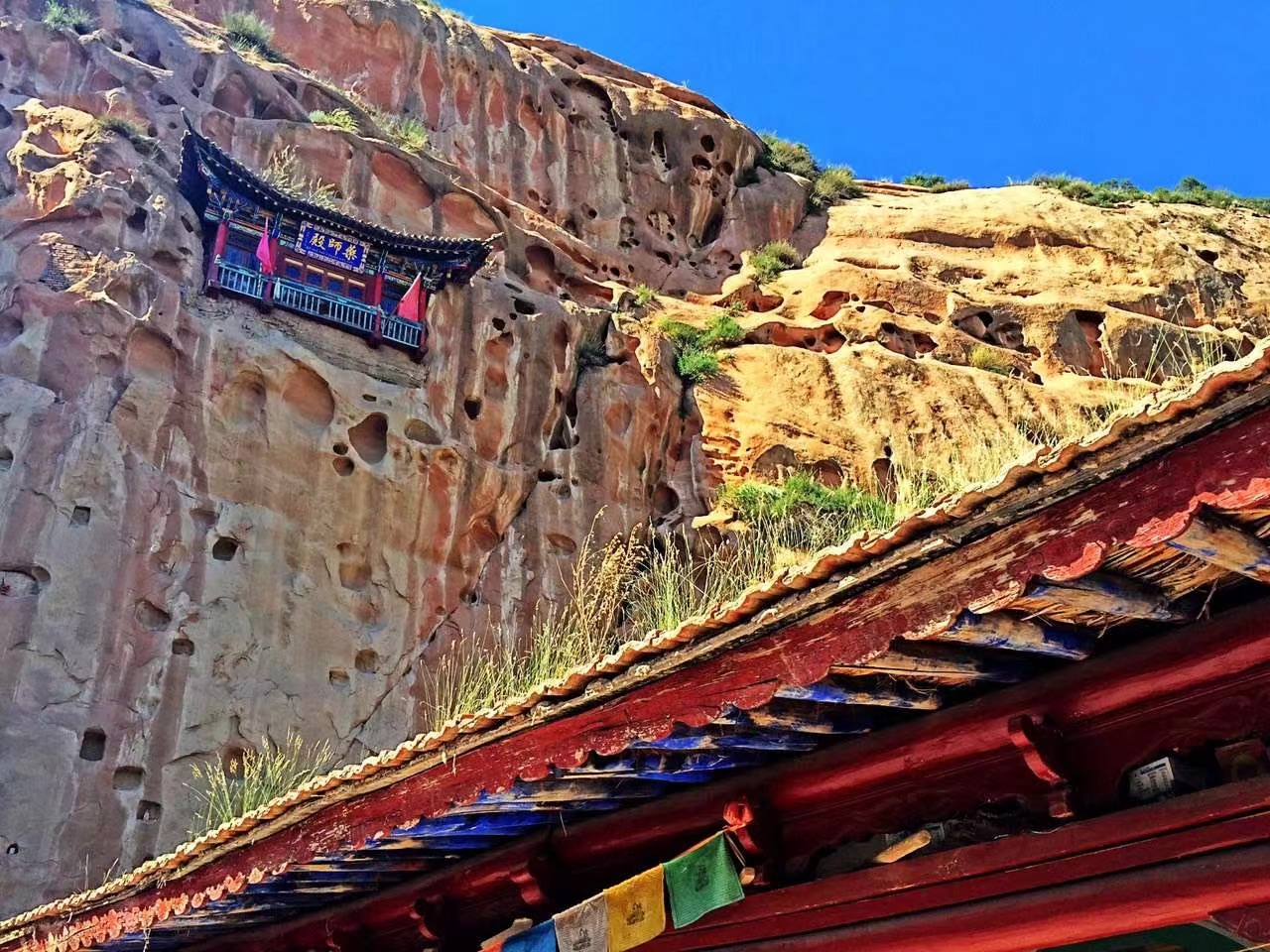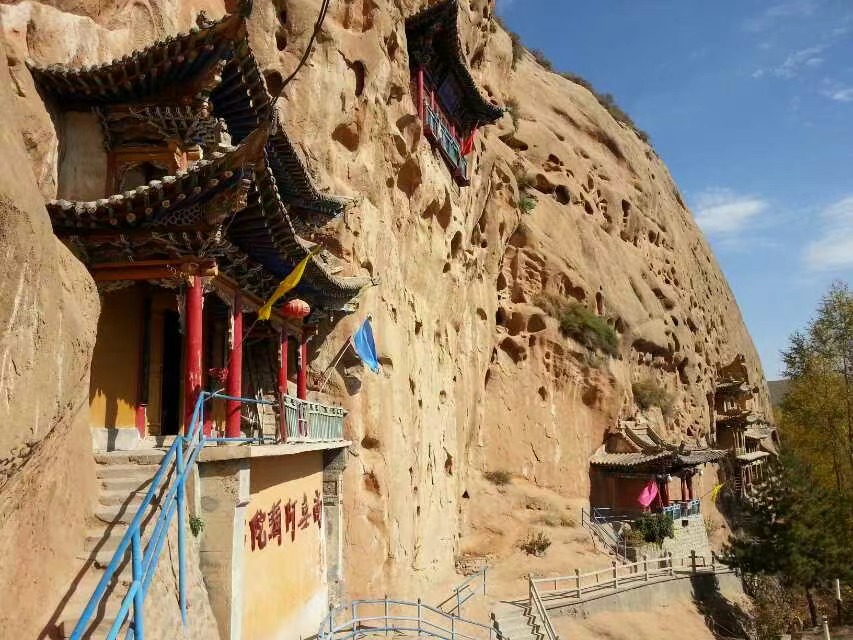Mati Temple ( Horse's Hoof Temple) is nestled in Linsong Mountain 65km away from Sunan Yugu Autonomous County in Gansu Province, China. The grottoes of Mati Temple are cultural relics under the provincial protection.
The grottoes of Mati Temple were firstly carved in Eastern Jin Period (317-420AD) by Guoyu and his followers about more than 1600 years ago. It was continuously expanded in the successive dynasties of Sui, Tang, Western Xia, Song, Yuan, Ming and Qing dynasties. Unfortunately after the founding of the PRC, a lot of ancient construction, sculptures and murals were terribly destroyed in political turmoil. What has survived, however, are still of very high artistic and archaeological value.
Mati Temple is composed of seven parts with over 70 caves the One thousand Buddha Caves the Southern Mati Temple, the Northern Mati Temple, the Upper Cave of. Avalokitesvara, the Middle Cave of Avalokitesvara, the Lower Cave of Avalokitesvara, and Jinta Temple ( the Golden Pagoda Temple).
In Gansu Province Mati emple grottoes rank the fourth after Mogao Grottoes, Maiji Mountain Grottoes, and Bingling Temple Grottoes. In the scenic area of Mati Temple, the Northern Mati Temple and the Jinta Temple are the best-preserved.
Jinta Temple, located on the bank of Daduma River is not very accessible. It is made up of the Eastern Cave and the Western Cave, which are both carved on cliffs of Cigou valley. The Eastern Cave is 6. 05m high, 9.7m wide, housing clay sculptures of Buddha, Bodhisattva, Bikku and the Heavenly King. The sculptures, which remain the artistic style of Northern Wei, wear diverse countenances looking vivid.
The Western Cave is connected with the Eastern Cave by a wooden corridor. The structure of the Western Cave shares similarities with that of Eastern Cave but it is smaller in scale. And the sculptures of Buddha, Bodhisattva, Bikku, Heavenly King and the Flying Apsara have lost their original style due to the repairing later.
The Cave of 1000-Buddha is relatively close to the main gate of Mati Temple scenic area. The temple of the Cave of 1000-Buddha is different from those of Tibetan Buddhism. It is about Central China Buddhism. In 1959, the temple was pulled down. In 1986 a monk named Dijing returned to the temple as a Buddhist abbot. He collected alms all around and restored this temple including one hall for chanting Buddhist scripture, six monk's cells and seven Buddhist halls, namely the Grand Hall, the Hall of Standing Buddha, the Hall of Avalokitesvarar the Hall of Maitreya, the Hall of Medicine Buddha, the Hall of Ksitigarba and the Hall of Amitabha.
ln the Northern Mati Temple there are totally 21 caves which includes seven layers shaping like a pagoda. The third and fourth layers still remain the wooden eaves, corridors and stairs of ancient Indian style. On the floor of Cave No. 9 there is a clear print of a horse's hoof from which Mati Temple got its name.
There are many legends about this print of horse's hoof. Some people said it is the hoof print of Genghis Khan's horse. Some said it was left by the horse of Emperor Qianlong in Qing Dynasty (1636-1911AD). Since without any historical evidence, no one can tell which one is right.
Another opinion about the name of Mati Temple is that when the grottoes were carved9 people found a Tibetan seal. On the seal there is a word "mother "in Tibetan which pronounces "Mati". So the temple was named Mati Temple. After the visit of Mati Temple, 1 will guide to the tent of Yugu people to taste milk tea and liquor made from Qingke(highland barley) of local minorities.








